Garden Friends the Earthworm
While there are thousands if not millions of families willing to help the farmer and gardener to go about growing the perfect flower, tree fruit or vegetable. I have selected the 10 most common garden assistants found in my garden and farm. I start with the humble worm and conclude with spiders.
Earth Worms
Classification:
Class: Oligochaeta
Sub Class: Haplotaxida
Order: Megadrilaceae
Sub Order: Lumbricina or Moniligastrida
Little is known about the behaviour of earthworms in Australia. However the general princiles established from research overseas on earthworm ecology can be generally applied to most of the soils and climates in Australia.
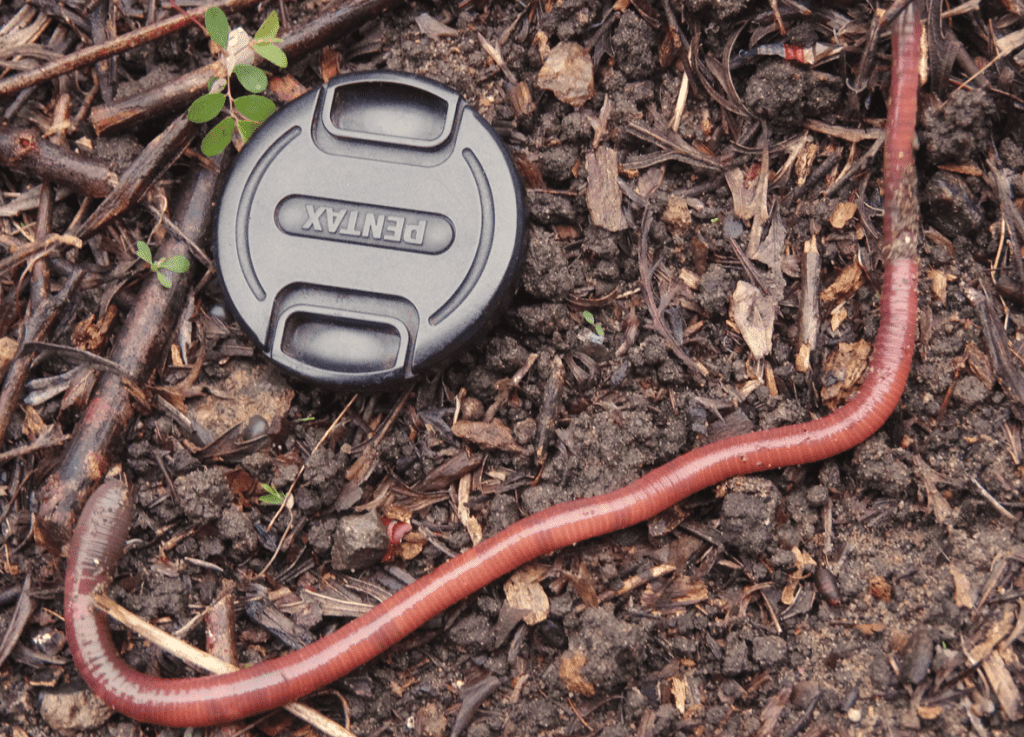
Earthworms have a brain, 5 hearts, breathe through their skin and a long gut which runs through the length of the outer casing the body. The earthworm’s body is covered with chemoreceptors. Chemoreceptors are tiny sense organs which detect chemicals in the soil allowing the worms to detect organic matter from inorganic matter and see within the soil. However some worms feed on the surface.
The smallest earthworms are about 10mm in length while the largest from Gippsland in Victoria have been recorded at 4 meters long but usually grow 1 meter to 2.5 meters in length.
Earthworms are homogamous hermaphrodites which mean they have a very interesting breeding cycle. Each earthworm has male parts that produce sperm and female parts that produce eggs. Self fertilization does not occur so earth worms need to find a mate. The reproductive system of gastropods including the Pulmonate land snails and land slugs are perhaps the best known kind of simultaneous hermaphrodite, and are the most widespread of terrestrial animals possessing this sexual polymorphism.
When two earthworms mate, they lie together, and cover themselves in sticky mucus, and pass sperm into each other’s body where it is stored in a spermatheca until required. The sperm makes the eggs inside each earthworm’s body grow.
A thick ring of slime forms around each worm’s body and as the earthworm contracts the rear muscles and extends the forward muscles to move forward, the ring with eggs inside it slips off and is left in the ground. The ring then closes at both ends and becomes a hard cocoon to protect the eggs.
The eggs hatch after two weeks if the weather is warm, but they can take up to three months to hatch when it is cold. Usually one or two earthworms hatch out of each egg. Earthworms are able to mate when they are twelve months old.
The Benefits we receive from earthworms and their activity in the soil are immeasurable. Not only do they convert insoluble organic matter to soluble plant food they aerate the soil assist in returning acid soils to a more neutral form and strong alkaline soils to a weaker form. Their body fluids are antifungal and anti nematode. Research done on earthworms certainly indicates that farm productivity declines, disease increases and pests become more prevalent and problematic with a corresponding decline in earthworm activity. Let’s look at these factors now in more detail
Improving soil nutrient availability and conditioning: To worms it just an every day activity of eating, mating and surviving life’s hazards but to the plant it is the optimum in health. The end result of a worm’s feeding frenzy on plant debris like dead roots, leaves, grasses and animal manures. Their digestive system concentrates the organic and mineral constituents in what they intake through their mouths, so their castings are richer in available nutrients than the soil around them. Nitrogen, phosphorous, potassium and calcium in the worm castings are all water soluble and readily available for our plants to absorb. No middle men here. As the worms themselves die, the protein in their bodies decompose rapidly, further contributing to the nitrogen content of soil.
New Zealand research shows that worm castings release four times more phosphorus than surface soil. Worms often leave their nutrient-rich casts in their tunnels, providing a favourable environment for plant root growth particularly in heavy soils. The tunnels also allow roots to penetrate deeper into the soil gaining access to the extra moisture, oxygen and nutrients.
On good organic soils there may be over 700 earthworms in a square meter producing over 2000 tonnes of worm castings a year per hectare. This is rather impressive as it saves the farmer labour in spreading fertilizers and cost to but the fertilizers in the first place. No wonder fertilizer companies are anti worm. Direct competition at a fraction of the cost.
Improved drainage or improved moisture holding capacity: This is created by the kilometres of channelling and burrowing carried out by earthworms as they move through the soil in search of food, moisture and temperature regulation. This channelling increases the aeration with in the soil, improves soil drainage and the soil moisture holding capacity all at the same time. Soils with earthworms drain up to 10 times faster than soils without earthworms while at the same time increasing the water holding capacity of the soil. In zero-till soils, where worm populations are healthy, water infiltration can be up to 6 times greater than in cultivated soils. Almost means the tractor, implements and pump can be put to rest.
Improved productivity: Wait there is more. It has been proven in field trials and research into earthworms both in New Zealand and Tasmania, showed that farm productivity increases with worm activity. Our own records would lay testament to this as from the sixth year onwards we all but gave up fertilizing our fields, irrigation ceased in the eight year and production had out stripped our neighbours year after year with the highest prices for our produce in Australia so quality was not forsaken as a result. The research found earthworms introduced to worm-free perennial pastures produced an initial increase of 70–80mm in pasture growth, with a long-term 25mm increase this in return raised stock carrying capacity and milk quality of the pastures. Researchers also found that the most productive pastures in the worm trials had up to 7 million worms per hectare, weighing 2.4 tonnes. There was a close correlation between pasture productivity and total worm weight, with some 170 kg of worms for every tonne of annual dry matter production. Our orchard at Nana Glen which had mixed native and exotic pastures, was slashed 3 times in the initial year of production when the inter rows attained a height of 100mm to 150mm of growth. The same pastures after 10 years needed to be slashed every two weeks during the warmer months. There was an increase of over 12 times the organic matter now available to feed the worms and trees. But wait there is more. The quality of the pastures also increased at the same time without fertilizers and without irrigation. No I am not a magician it is pure biologic common sense.
Encourage earthworms: Because earthworms are essential for good pastures, good fruit and good flower production attracting them to your farm and away from your neighbour’s yard makes good sense. The next step is to get them to stay and breed. Earthworms do not like soil that is too acid, too alkaline, too dry, too wet, too hot or too cold so their presence is a good indicator of soil conditions suitable for exemplary plant growth. Attracting earthworms is a matter of providing food, moisture and a roof over their heads. The free loaders over a period of time they will move in and set up huge working cooperatives.
Ensure soil pH (CaCl2) is above 4.5: Earthworms do not like acid soils with pH (CaCl2) less than 4.5pH. The addition of lime raises pH and also adds calcium. Earthworms need a continuous supply of calcium, so are absent in soils with good quantities of this element. South Australian research found that earthworm numbers doubled when pH (CaCl2) rose from 4.1 to 6.7. (The pH can be measured in water or calcium chloride (CaCl2). The CaC12 method is more accurate and gives values of about 0.5–0.8 lower than water pH. A pH (CaCl2) of 4.5 measures about 5.0–5.3 in water.)
Increase organic matter: This is really saying feed your worms and ensure there is plenty of food available for them. Earthworms feed on the dead or decaying plant remains and animal waste in the soil. They are the principal agents in mixing dead surface litter with the soil, making the litter more accessible to decomposition by soil micro-organisms. Animal dung is also an attractive food for many species of earthworms. The following farming practices provide food for earthworms. Earthworms will double their numbers approximately every 90 days or approximately 16 times a year. (I worm will make approximately 16 to 32 worms a year less nutritional rates)
Permanent Pasture: Permanent pasture provides organic matter as grass and legume leaves and roots die and decay more rapidly. Pasture and lawn slashing and manure from grazing animals are also good sources of organic matter in pasture and garden beds. Permanent pastures regulate the soil temperatures and humidity in the upper layers of the soil. Soils devoid of pasture or regularly sprayed are also devoid of worms.
Green Manure Crops: Green manure crops are fodder crops turned into the soil to provide organic matter to benefit the following crop. The crops are grazed or slashed, sometimes pulverized, and then left on the soil surface. This method is very affective and lawn clippings make a tremendous difference to the worms
Crop stubble: Stubble is an important source of organic matter. Burning stubble destroys surface organic matter, and this affects worm numbers. It is best to leave stubble to rot down, and sow following crops into the stubble using aerial sowing, direct drill or (at least) minimum tillage. All these techniques mean less cultivation, and this also encourages earthworms. There is no need to pull and dig annuals out, just cut them off near the ground and leave them where they grew. This will promote different types of worms as different types of worms have different feeding habits.
Rotations: Rotating pasture with crops helps build up organic matter levels and earthworm numbers.
The use of herbicides and pesticides is a leading cause for the disappearance of earthworms from the garden since most of these are toxic to the worm when absorbed through the skin or mouth and into its gut. Highly acidifying fertilizers such as ammonium sulfate and fungicides reduce worm numbers. Researchers have found that orchards sprayed with Bordeaux or other copper sprays contain few earthworms and have peaty surface mats and poor soil structure.
Keep the soil moist: Earthworms can lose 20mm of their body weight each day in mucus as they move through the soil and excrete their castings, so they need moisture to stay alive. Ground covers such as pasture or stubble reduces moisture evaporation. Decaying organic matter (humus) holds moisture in the soil. In dry times most Australia species burrow deeper into the soil and become inactive until rain ‘reactivates’ them. Worms in the state of inactiveness coil themselves or in small groups with other worms into little balls of knots and feel dry.
Improving the drainage for worms to ensure good drainage is difficult in water logged gardens but there are worms that will survive there so try to build little mounds to encourage those that do not like water logged situations.
Soil Compression: Compression of the soil is another hazard earthworms face every day along with excess tillage of the soil. It is difficult for earthworms to move through heavily compacted soil, so keep vehicle and animal traffic to a minimum particularly in wet conditions. As they decrease the compaction of heavier soils your plants will begin to thrive and their roots will in return encourage more worms to the garden.
Reduce cultivation: Ploughing and digging as digging and ploughing the soil reduces earthworm numbers. Researchers have found that after four years, zero-tilled paddocks had twice as many worms as cultivated soils. However, shallow cultivation may not affect worm numbers.
Introducing earthworms to the farm and garden is easy but it needs a change in farming practices. If you do not have many earthworms in your soil, introduce some of the practices described above. It is surprising how quickly they build up in favourable conditions. You will not have to wait 90 days to double the numbers of worms in your garden. They will commence the migration from neighbouring gardens as soon as the food supply is guaranteed. When the words out they will hone in like men to a gold rush.
Cut pasture sods from areas with high worm populations and transfer them to worm-free areas. New colonies will establish within a couple of years as long as there is plenty of organic matter and soil and climatic conditions are favourable. It is important that you transplant pasture, not just worms. Do not try and transplant compost worms into agricultural soils. Species that thrive in compost will not survive the harsher conditions of paddock soils, which dry near the surface.
Information in this article was collated from the following web sites along with personal experiences.
During the early 1990’s we were fortunate to receive worm Castings from Frank Dowdel, Camphor Creek worm Farms to do some tests in the field and control work.
The worms were fed various feeds and these were monitored for affect on various plants.
The castings were fed to potted Citrus trifoliata, Citrus Citrange and Acacia melanoxylon.
The plants received 0mm layer, 5mm layer & 10 mm layer to the surface of the 200mm plastic bags.
A second batch of plants also received the above quantities mixed into the mix prior to potting up.
The plants that had 5mm & 10mm equivalent mixed into the potting mix showed the best initial growth while those with the 5mm & 10ml layer on the surface displayed the better long term (2 years) growth.
It was noticed that there was a strong presence in all the pots of except the control of Trifolium repens (White Haifa clover). The worms had received pasture grasses and cattle manure where white haifa, clover, Paspalum and Parramatta grass was growing.
At the same time it was noticed that there was a complete lack of monocotyledon grasses including Sporobolus africanus (Parramatta Grass) and Paspalum sp. This was an interesting fact because Nana Glen was at the center of the outbreak on the North Coast and infestations were widespread in the district including Frank’s pastures and our orchard.
The control pots had no weed infestation including both monocotyledon and dicotyledon weeds at all.
Seeds were unavoidably and deliberately fed to the worms. These castings were later tested by mixing them with our potting mix at 10mm worm castings and 90mm potting mix. The results were the same as before. Trifolium repen proliferated in the pots while there was a complete absence of Sporobolus africanus and Paspalum sp..
From this we deuced that the worms either did not eat the seeds of Trifolium repen or they passed through the worms. The worms had no affect on the inoculating bacteria. Sporobolus africanus and Paspalum seeds may have been totally consumed by the worms or they were made ineffective in the short term (5 to 20 days) to mid term (up to 2 years the duration of maintaining the pots) in germinating.
Follow up tests done 2 years later. The mix; in the pots being tested, was tipped out and remixed to imitate ploughing in the field. The soil was replaced back into the bags and watered. Trifolium repen again sprouted with a lack of any monocotyledon grasses including Sporobolus africanus and Paspalum sp..
It was also noted that Trifolium repens was also strongly inoculated with nitrogen Fixing Bacteria; in all bags from a very early age. The bacterium was noted on plants that had reached the 2 leaf stage.
In conclusion it should be noted that in the field many grass seeds would not be found or eaten by worms. At the same time a heavy infestation of worms may in fact help control monocotyledon weeds by being eaten while at the same time improve the soil quality in the garden and on the farm allowing for stronger growth in plants that would normally be inferior in strengths to the above mentioned grasses.
Assassin Bugs
Classification:
Phylum: Arthropoda
Class: Insecta
Order: Hemiptera
Suborder: Heteroptera
Infraorder: Cimicomorpha
Superfamily: Reduvioideae
Family: Reduviidae
Subfamilies: Bactrodinae
Centrocnemidinae
Cetherinae
Chryxinae
Ectrichodiinae
Elasmodeminae
Emesinae
Hammacerinae
Harpactorinae
Holoptilinae
Manangocorinae
Peiratinae
Phimophorinae
Phymatinae
Physoderinae
Pseudocetherinae
Reduviinae
Saicinae
Salyavatinae
Sphaeridopinae
Stenopodainae
Triatominae
Tribelocephalinae
Vesciinae
Visayanocorinae
Genus:
Common Names: Assassin Bugs.
Assassin literally means to sit in hiding, wait and kill. Assassin bugs are therefore ambush carnivores , preying on almost every soft bodied insect, caterpillars and spiders that wonder within striking distance around the garden, agricultural fields, orchards and parks. They will eat anything within reach and of a reasonable size to hold. The assassin bugs are much maligned because of their overall appearance being similar to that of stink bugs. There are over 300 different specie of Assassin bugs in Australia.
All of our species are predators with elongated heads and a curved rostrum beneath. The same enzymes cause intense local pain when humans are bitten. The adults range from 4mm to 40mm in length. They all have an elongated head with a distinct narrowed neck, long legs, and a prominent, segmented tube rostrum for feeding.
Reduviidae use the long rostrum to inject lethal salivas that liquefies the insides of the prey, which are then sucked out. The saliva contains enzymes that predigest the tissues of their prey prior to swallow. This process is generally referred to as extra oral digestion , or EOD. The saliva is effective at killing prey substantially larger than the bug itself. If a person is accidently stabbed the saliva causes intense localized burning pain which subsides over an hour or so. Take it from someone who knows.
The legs of some Reduviidae have areas covered in tiny hairs that aid in holding onto their prey while they feed. Others particularly those in the subfamily Phymatinae have forelegs that resemble those of the praying mantis , and they catch and hold their prey in a similar way to mantis.
As nymphs , some species will cover and camouflage themselves with debris or the remains of dead prey insects, which forms a very effective camouflage . Some species tend to feed on pests such as cockroaches or bedbugs and are accordingly popular in regions where people regard their hunting as beneficial. Thefeather legged assassin bugs eat termites and millipedes .
Some research on the nature of the venom from certain Reduviidae is under way. The saliva is showing positive signs as target insecticidal activity in tests on lepidopteran pests. The effects included reduction of food consumption, assimilation and utilization. Its anti aggregation factors also affected the aggregation and mobility of haemocytes.
Bees & Pollen Flies
Classification:
Class: Insecta
Order: Hymenoptera
Superfamily: Apoidea
Family: Apoidae
Subfamily: Apinae
Tribe: Meliponni
Genus: Tetragonula
Common Names: Native Bees or Stingless Bees.

Australia presently has 10 species of stingless social or hive forming bees. Most belong to the genera Tetragonula which was previously called Trigona with the remainder in the Austroplebeia genre. Stingless bees are important pollinators for many native orchids both epiphytic and terrestrial. In cash crops it has been proven that Macadamias, Mangos, Watermelons, Lychees and members of the Rubus genre all have increased production rates when native bees are close at hand. They also actively work Citrus and Microcitrus which may also benefit strongly from native bees.
Early studies at the University of Western Sydney have shown; excellent results with, stingless bees working in confined areas such as glasshouses production of capsicum and chilies.
Other types of Australian native bees can also be great crop pollinators. The native blue banded bee (Amegilla cingulata), teddy bear bees (Amegilla bombiformis) and carpenter bees (Xylocopa and Xylocopa) can perform a special type of pollination called buzz pollination. This could make them ideal pollinators of crops such astomatoes, kiwi fruit, eggplants, blueberries, cranberries and chili peppers. The commercial honey bee (Apis mellifera) cannot perform buzz pollination.
A three year research project is well underway at the University of Adelaide on how to use blue banded bees for commercial greenhouse tomato pollination. It has already discovered how to breed these native bees year round in large numbers to assist tunnel farmers in cold regions of Australia.
Using native blue banded bees for greenhouse tomato pollination is a much better option than introducing European bumblebees for this purpose.
Now I feel really awful, for singling out and giving credit to just 14 of Australia’s more than 1600 species of native bees. Thanks girls and boys for a wonderful job.
Centipedes
Classification
Class: Chilopoda
Family: variable
Genus: variable
Common Names: Centipedes.
Centipede or literally 100 feet is from the Latin. Centipedes are a predominantly carnivorous hunters preying on almost every soft bodied insect, slugs, snails or small vertebrae are bought down by the larger members around the garden, agricultural fields, orchards and parks. They will eat anything within reach and of a reasonable size to hold. There are 136 different specie of centipedes in Australia.
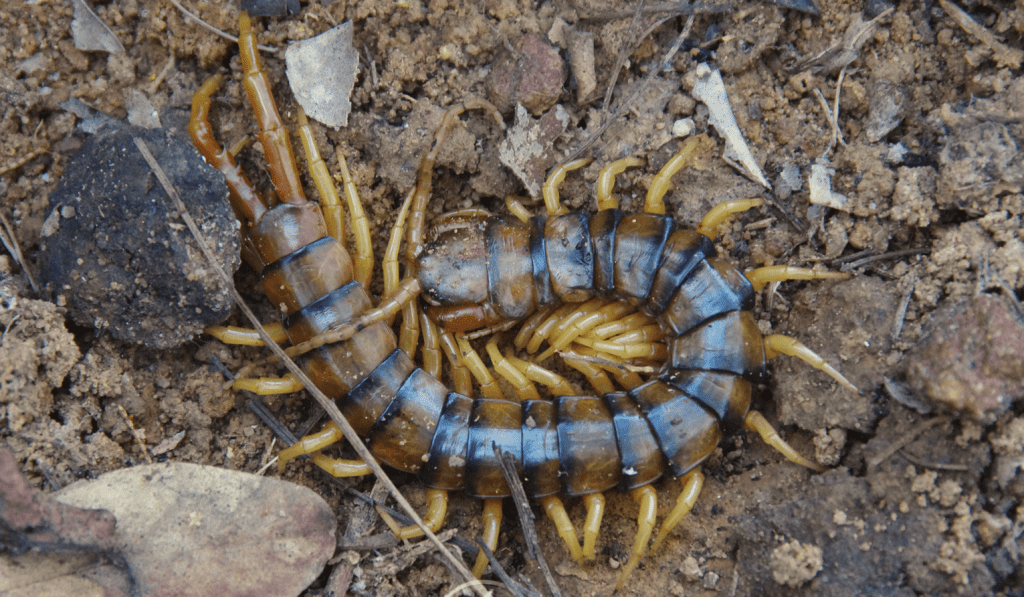
Centipedes are elongated metameric creatures with one pair of legs per body segment. They have 18 to over 300 legs. With the exception of one species centipedes always have an odd number of pairs of legs 15 or 17 pairs of legs which equal 30 or 34 actual legs. A key trait among centipedes is the front pair of legs have developed into a pair of venomous pincers known as forcipules.
Centipedes are normally fawn, olive, brown and auburn among the Cavernicolous or cave dwellers while the subterranean specie may lack pigmentation all together. The many tropical scolopendromorphs have bright aposematic colours.
They vary greatly in size and can range from a few millimeters in length in the smaller lithobiomorphs and geophilomorphs to more than 300mm in the largest scolopendromorphs. Australia’s largest centipede will attain a length of 160mm. Centipedes can be found in a wide variety of environments.
Centipedes are found from the tropical rainforests of north Queensland, to the central deserts of Western and South Australia to the temperate highlands of Tasmania. Centipedes require a moist microhabitat because they lack the waxy cuticle of insects and arachnids. Because they lose water rapidly through the skin they are found in moist environments among leaf litter , under rocks and inside logs.
Hover Flies
Classification
Class: Insecta
Order: Diptera
Superfamily: Syrphoidea
Family: Syrphidae
Common Names: Hover Flies or Pollen Flies.
Hover flies have a very characteristic flight pattern, hovering in one spot, moving suddenly forwards or sideways or sometimes vertically before hovering again.

Identification
Hover flies are small to medium sized flies with large heads, large eyes, and small or inconspicuous antennae. Their bodies are medium to slender, with a waist that is not significantly narrow, unless it is a wasp mimicking species. They have one pair of clear wings, and the banded forms have yellow and black bands of equal width.
Hover fly mimicry of wasps can include having a warning coloration of yellow and black, a narrow waist like a wasp and even the ability to mimic the stinging action of a wasp, by pushing the tip of the abdomen into your fingers if they are caught and held. However, they do not sting and are quite harmless.
Aphid eating hover fly larvae are flattened, legless and maggot-like. Most are green or brown in colour, going largely unnoticed as they crawl over foliage in search of their aphid prey.
Most people mistake hover flies for wasps or bees because of their black and yellow-striped abdomens and also because they can occur in huge numbers. However, they are actually members of a fly family that have evolved as wasp and bee mimics.
Their size ranges from 8 mm to 20 mm in length
Distribution and habitat: Hover flies are found throughout Australia. Hover flies live in urban areas and more sheltered areas in open forests and pastures.
Feeding and Diet
Hover flies may appear in large numbers during hot weather. They linger in gardens to feed at flowers and to seek shade. Many species perform the useful role of ridding the garden of aphids, as they lay their eggs in aphid colonies and the larvae (maggots) feed on the aphids.
Other behaviours and adaptations
Hover flies are also called flower flies because they are commonly seen during warmer months hovering among flowers, feeding and mating. They are responsible for the pollination of many plants.
Life cycle
Some hover fly species (Eristalis species) lay their eggs in stagnant water. These aquatic larvae have a long thin breathing tube – hence the common name, “rat-tailed maggots”. Another hover fly species (Microdon species) has a larval form that scientists originally classified as a mollusc because it looks rather like a small slug. Microdon larvae survive by scavenging in ant nests, mimicking the ants’ chemicals in order to escape detection by their hosts.
Lacewing
Classification
Class: Insecta
Order: neuroptera
Family: Chrysopideae
Genus: Mallada
Common Names: Lacewings

“Lace wings; to me anyway, are the beauties of the orchard. Delicately clad in pale green with translucent outstretched wings, shimmering in the sun,

She hides the grizzly, stalking killer that lies beneath in search of sweet, innocent little aphids and white flies minding their own business having fun,
No one, yes no one would suspect the gorgeous, sweet little, intimate Green Lace Wing of anything sinister, or having a voracious appetite when it comes to dinning in the spring,
She makes every meal a feast, a banquet she unfolds, for her tender loving off spring,
This makes her the gardener’s supremly beautiful friend,
So why I ask, why, is it that, so many turn to slaying her with deadly, hazardous, poisonous operations,
That leaves, this, the most graceful, exquisitely beautiful, fragile damsel, dead along side violent, callous marauding, insensitive vegetarians that know no satiation,
The graceful, enticing, little Green Lace Wing has nothing to fear, from me, in my native garden.” –andi Mellis
The Green Lacewing will lay 300 to 500 eggs over the month that she resides in my garden. She lays her eggs close to their food source of aphids. The eggs hatch in 3 to 6 days depending on the temperatures and humidity. The lavae have 3 instars before it pupates. After 10 to 14 days as pupae the adults emerge. They winter under rocks and logs in natural bush land. It is important to have natural landscape around to keep the balanced cycle going. Lacewings are more fastidious eaters which prefer to eat aphids and will eat 600 to 1,000 aphids in their life time. They will also eat red spider Mite, white fly, leaf hoppers, leaf miners when they approach to close and small caterpillars.
Lady Birds
Classification
Class: Insecta
Order: Coleoptera
Suborder: Polyphaga
Superfamily: Cucujoidea
Family: Coccinellidae
Common Names: Lady Beetles or Lady Birds
Coccinellidae or literally scarlet sphere from the Latin are generally considered useful insects around the garden, agricultural fields, orchards and parks because most species feed on aphids or scale insects , which are pests. There are 152 different specie of Lady Birds in Australia.
The females which are larger than the males lay 10 to 50 spindle shaped yellow eggs in a cluster. She will lay 800 to 1,000 eggs over the 3 months of her life and reside close to their food source of aphids or mites. The eggs hatch in 2 to 14 days. The lavae have 4 instars before it pupates. After 7 to 10 days as pupae the adults emerge. They winter beneath rocks, logs or even coarse mulch in natural bush land. It is important to have natural landscape around to keep the balanced cycle going. Lady birds are general insect eaters having a wide variety of prey to live on including red spider Mite, white fly, leaf hoppers, leaf miners, small caterpillars, beetle lavae, mealy bugs and the eggs of other lady bugs like the notorious 28 spotted lady bird which has taken a liking to Cucurbitaceae specie.
Millipedes
Classification
Class: Insecta
Order: Hymenoptera
Superfamily: Apoidea
Family: Apoidae
Subfamily: Apinae
Tribe: Meliponni
Genus: Tetragonula
Common Names: Native Bees or Stingless Bees.
Millipedes are in the Dilopoda class which literally means 2 feet in Greek and refers to the Arthropods having 2 legs in each body section. There are over 700 sorted and undescribed specie of millipedes in Australia with an estimated 800 to 1,300 species in total awaiting the young biologist to make his mark.
Most millipedes are detritivores meaning they feed on decomposing vegetation, faeces, or organic matter mixed with soil. As a consequence this hastens the decomposition of garden waste. Millipedes in the order Polyxenida graze on algae from bark and paths while Platydesmida feed on fungi. A few species are omnivorous or occasionally carnivorous, feeding on insects, centipedes, earthworms or snails .
Parasitic Wasps
Classification
Class: Insecta
Order: Hymenoptera
Superfamily: Chalcidoidea
Common Names: Parasitoid Wasps.
The order Hymenoptera includes swies, bees, ants and wasps including the parasitoid wasps. There are 100,000 different specie of parasitic wasps world wide with 200 new species discovered in Costa Rica in 2013. The Australian species are not well documented but could well be over 15,000. In small areas the populations can be quite large indicating that parasitic wasps may play a more intrical part in the WEB of LIFE in controlling insect numbers than previously thought. In some specie of parasitic wasps the females have much greater ratio of 1:1 male to female. The life history sounds gruesome but plays an important role in the principle of Nature trying to find that elusive equilibrium. The female lays her egg or eggs on or inside the non suspecting host’s egg, larvae or at times mature insect or spider. Most parasitic wasps are host specific. The larvae hatch and immediately begin to eat its host from the inside out. Most host larvae stop eating immediately following parasitism with most being paralysed. When the adult host is parasitised the adults usually become zombies. They move very little, stop feeding to conserve energy.
Preying Mantis
Classification:
Phylum: Arthropoda
Class: Insecta
Subclass: Pterygota
Superorder: Dictyoptera
Order: Mantodea
Infraorder: Neoptera
Family: Acanthopidae
Amorphoscelididae
Chaeteessidae
Empusidae
Eremiaphilidae
Hymenopodidae
Iridopterygidae
Liturgusidae
Mantidae
Mantoididae
Metallyticidae
Sibyllidae
Tarachodidae
Thespidae
Toxoderidae
Common Names: Praying mantis or Preying Mantis or Mantis.

Preying mantis or Mantodea literally means the prophet in Greek and refers to the appearance of the insects in perpetual prayer. There are over 120 sorted and undescribed specie of Preying mantis in Australia.

Believe it or not the beloved Mantis’s first cousin is despised by humans. The humble cockroach, which are the scavengers of decaying matter is believed to be the ancestral grand daddies of today’s mantis.

Medium to large insects form their primary diet of a mantis as an adult. In its first instar a mantis eats small insects such as tiny flies, its own siblings while some eat pollen. The pollen eaters usually develop a hunger for pollen flies in the second instar stage. In later instars it does not or cannot profitably pursue such small prey and moves to larger insects. In the final instar as a rule the diet still includes more insects than anything else. Large species of mantis have been known to prey on small scorpions , lizards , frogs , birds , small snakes , fish , and even mice. They feed on any species small enough for them to capture, but large enough to engage their attention. For example, a large mantis feeding on a bee or bug might be pestered with impunity by jackal flies and biting midges that it would readily have eaten in its first instar. Large prey tends to increase in value with the cube of its dimension. A blowfly four times as long as a lacewing represents a meal about 64 times as massive. When a female mantis is into her final growth spurt and is accumulating nutrients to make eggs, the largest available prey that she can manage is the most effective for her to capture and devour.
The majority of mantises are ambush predators , but some ground and bark species actively pursue their prey. Species that are predominantly ambush predators camouflage themselves and spend long periods standing perfectly still. They largely wait for their prey to stray within reach, but most mantises chase tempting prey if it strays closely enough. In pure ambush mode a mantis lashes out at remarkable speed when a target approaches. A mantis catches its prey and grips them with grasping, spiked forelegs. The mantis usually holds its prey with one arm between the head and thorax, and the other on the abdomen. Then, if the prey does not resist, the mantis eats it alive however, if the prey resists the mantis will simply bite its head off head. Really the choice is yours and death is assured.
Unlike sucking predatory arthropods and assassin bugs, a mantis does not liquefy prey tissues or drain its prey’s body fluids, but simply slices and chews it with its mandibles.
While the Mantis maybe the gardens friend the female of most specie appear to indulge in sexual cannibalism. The females are much larger than the males which mean double trouble for the poor males. The male engages the female in courtship dance, to change her interest from feeding to mating. Not all Mantis specie engages in courtship displays.
The female may begin feeding by biting off the male’s head and if mating has begun, the male’s movements may become even more vigorous in its delivery of sperm. Early researchers thought that because copulatory movement is controlled by a ganglion in the abdomen, not the head, removal of the male’s head was a reproductive strategy by females to enhance fertilization while obtaining sustenance. Many entomologists believe that female sexual cannibalism is not the norm. I have only witnessed this once in the field (Being 100mm of the time.) where a male was beheaded during mating. This action is consistent with females devouring large prey at a voracious rate in the final adult stage leading up to mating; the males have no further use and to ensure that she gets all the sperm increasing her chances to mother as many offspring as possible. It also ensures other females including her, will not engage in mating with a male that has no or little sperm to service her with.
Organic gardeners who avoid pesticides may encourage mantises as a form of biological pest control . During fall in temperate regions, mantis females typically deposit their ootheca on the underside of a leaf or on a twig, and in some species these are harvested commercially. If the egg case survives winter, the offspring, called nymphs, emerge in late spring or early summer. The nymphs have voracious appetites and typically cannibalize each other if they cannot find an adequate supply of aphids and other small insects. Tens of thousands of mantis egg cases are sold each year in some garden stores for this purpose. However, mantises prey on neutral and beneficial insects as well, basically eating anything they can successfully capture and devour.
Spiders
Classification:
Phylum: Arthropoda
Class: Arachnida
Order: Araneae
Suborder: Mesothelae
Common Names: Spiders or Tarantulas or Huntsman.
They will eat anything within reach and of a reasonable size to hold. There are 40,000 different specie of spiders named world wide with about 8,500 in Australia.
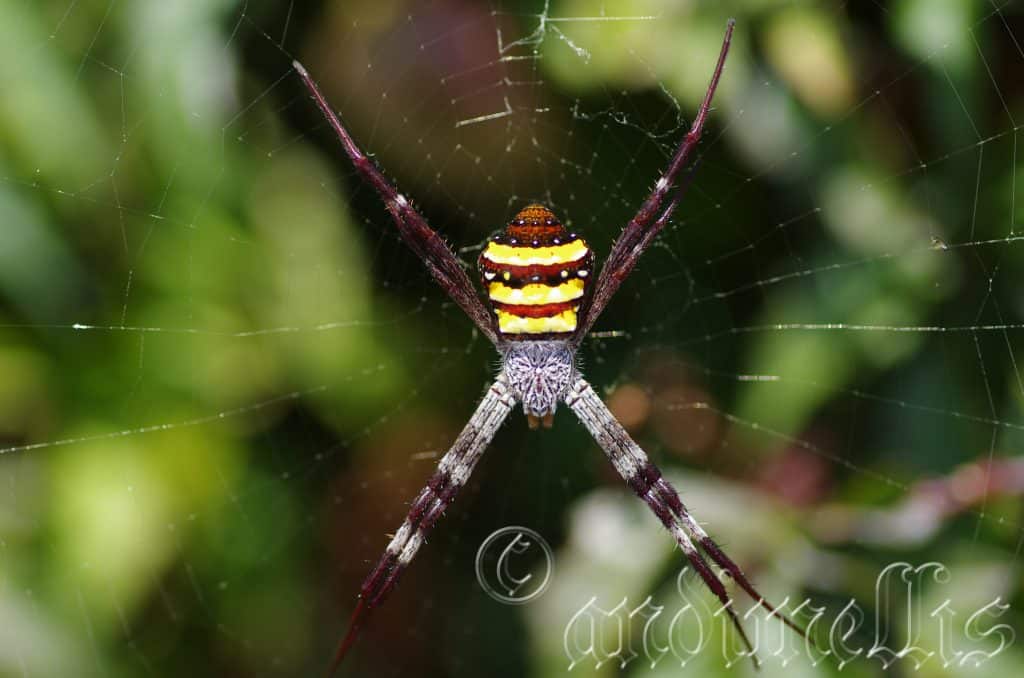
If you suffer from arachnophobia you have a strong fear of spiders. These docile creatures are maligned, feared and sometimes scorned, but the importance cannot be overemphasized in controlling insect pests. The order of Araneae is the largest entirely carnivorous group of animals on the planet? Most people can recognize a spider, even without knowing the physical characteristics that scientists have for describing them.
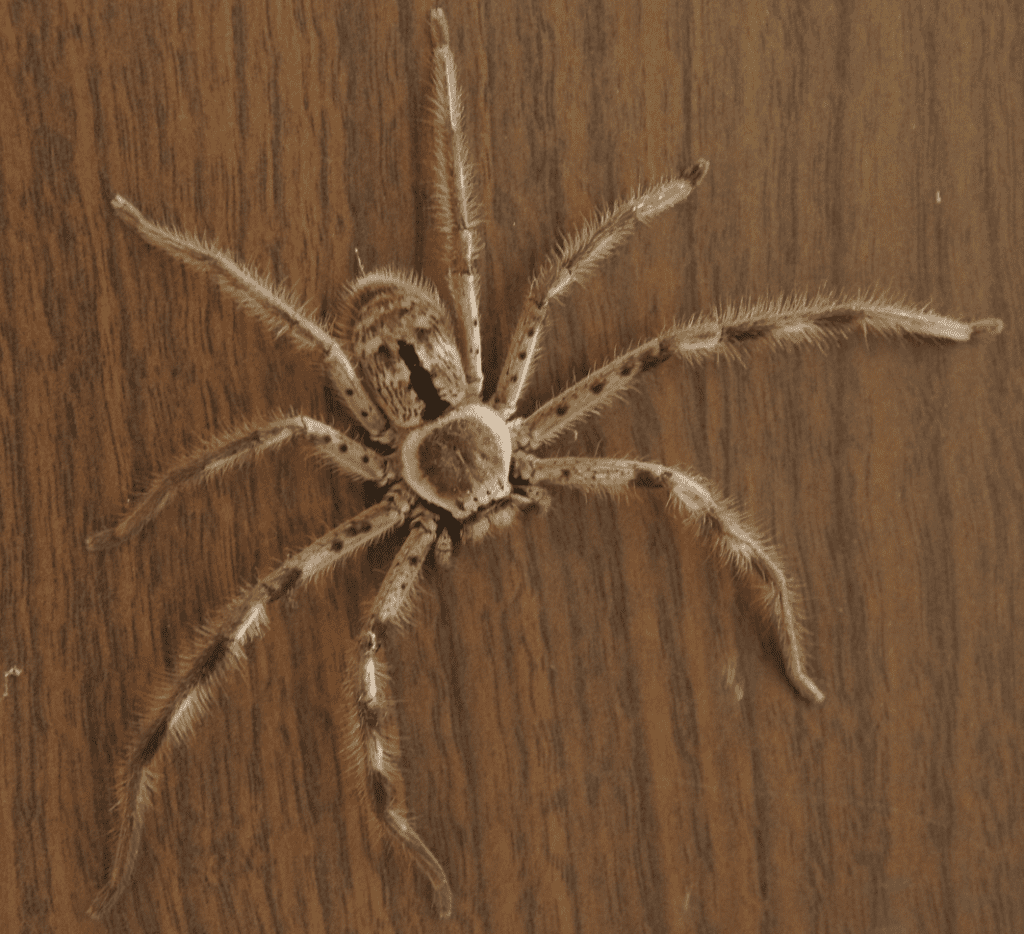
The abdomen is soft and unsegmented; while the cephalothorax is the harder section which includes the eight legs and face that characterize spiders.
Spiders prey on other organisms, usually insects or at times other spiders and centipedes. Spiders are only capable of consuming liquids as they lack chewing mouthparts. They use chelicerae the pointed appendages at the front of the cephalothorax to grasp their prey then inject venom. Digestive juices break the food down into liquid, which can then be ingested by the spider.
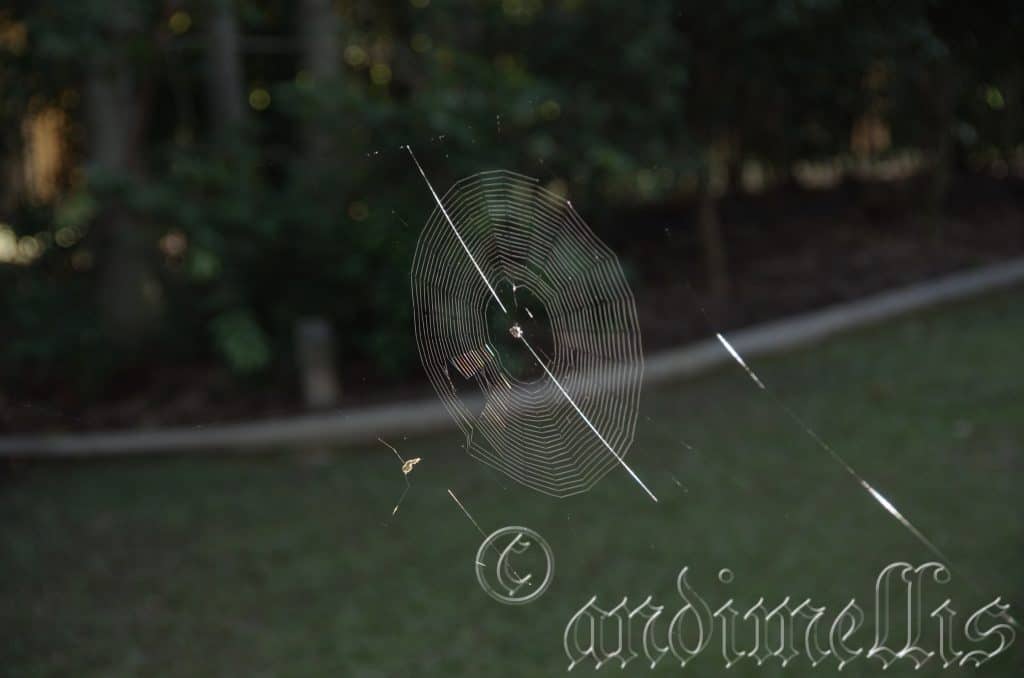
If you really want to identify a spider you must look into its eyes. Most spiders usually have eight simple eyes or at times 4, 6 or 10 or even none at all. When trying your spider you need to count the number of the eyes, their arrangement on the face in detail is very important. Notate where the small eyes are the large eyes etc.
Frogs and Toads
Phylum: Chordata
Class: Amphibia
Glade: Salientia
Order: Anura
Suborder: Archaeobatrachia
Suborder: Mesobatrachia
Suborder: Neobatrachia
Anura or literally without a tail is from the Greek A or An without and oura a tail. Most are generally considered useful insect hunters around the garden, agricultural fields, orchards and parks because most species feed on larger problemsome insects, which are pests. There are 215 different specie of frogs and toads in Australia. Frogs and toads are very similar in all aspects with frogs being members of the Ranidae family thetrue toads are members of the Bufonidae family.
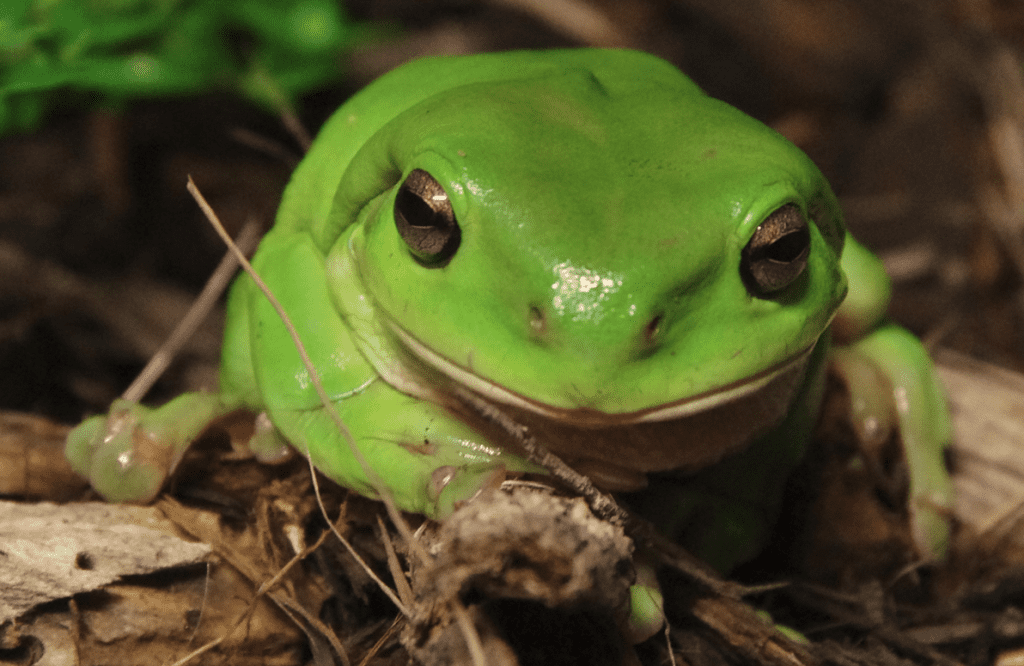
Australia’s smallest known frog is the slender javelin treeLitoria microbelos which measures just 12mm to 14mm in length while the largest tree frog in the world is Australia’s white-lipped tree frog Litoria infrafrenata which measures 120mm to 135mm in length and can live up to 14 years of age.
Frogs are easy to attract to the garden provided a small fresh water pond is made available to them. The life cycle starts with a noisy on chore usually on a warm humid evening. Following the courtship the female will lay a couple of dozen to thousands of eggs in a moist position or more often in water among reeds and grasses. So having protective covering around and at the edge of your pool is essential. The eggs are covered in a jelly or frothy substance which keeps the eggs moist until they hatch. The hatchlings or tadpoles hatch after a few days. Most of Australia’s tadpoles are herbaceous gleaning algae from the surface of rocks, logs or other higher order plants. Then metamorphosis commences with the transition of development from a tadpole to frogs. The hind legs begin to develop after 2 to 5 weeks in the pond or among moist crevices and leaves. Following the development of the hind legs the tail begins to disappear as the front legs grow. The gills are now being replaced with lungs and its herbivore grazing habits turn to carnivore and hunter.
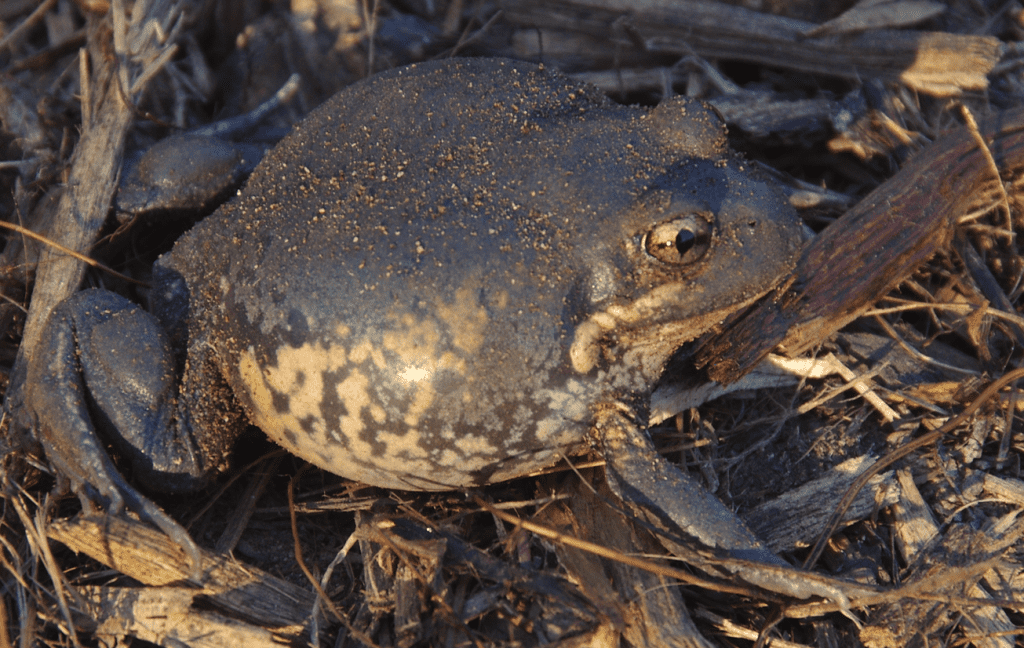
Now you have a night time sentinel patrolling your garden, protecting your cherished plants by seeking out all those insects, snails and slugs that venture out when you are asleep.
Birds
Phylum: Chordata
Class: Aves
Order: Various
Common Names: Birds.

Our Orchard attracted thousands of birds every day. The one hundred acres of bush surrounding the orchard was the perfect habitat. Our problem was how to attract them into the garden to keep the pests down. The problem was easily solved. Water – Clean, safe water free from predators. We set up 2 waters stations which were eagerly sought but something was amiss the birds bee lined to the water and bee lined back out meaning there was a insect free zone with areas between still suffering some insect damage. We could increase the number of watering stations but this would only partially solve the problem.

What we did was similar to what occurred with the ducks roaming free beneath the trees. Move the feed stations so the ducks had to find the food. The ducks were great as they scavenged daily around the 3 hectares foraging and eradicating every snail and slug that dared to show up for dinner. Moving the now 3 transportable watering stations was easy. The birds flew in and soon learnt like the ducks to scavenger their way around until one or two found it then it was bee line in the afternoon again.
Birds we learnt had an amazing communication network even amongst different genre and specie. When one found it the word spread quickly the larger more aggressive birds move in and the smaller birds had to find another station. Either that or the smaller birds soon learnt to out smart their more aggressive cousins by leading them to the nearest water station and leave the outer 2 for themselves.

Water is the best method to attract birds to your garden. Food is a dangerous ploy as most human prepared foods are not well suited to the diets of wild birds. Coupled with absenteeism will causes stress on the whole bird population in the district.
Weed Control: Finches consume great quantities of weed seeds, making them effective landscapers to help control unwanted weeds that surrounded the orchard. Planting seed-bearing flowers for birds can also give them a natural food source to enjoy without needing frequent feeder refills. Many of the native Panicum specie were planted as erosion control and the birds maintained a vigilant stand on the seed heads as they ripened allowing just enough to regenerate without becoming a threat and encroaching on the orchard.

Stress Relief: Working outdoors allowed us to interact with birds on a daily basis. It gave us relaxation by watching and listening to their songs and chattering between choruses. Improving their habitat helped to relieve stress and promote well-being. Another stress free day with your daily supplement of vitamin D detoxifying the body with your intake of fresh air is what the doctor ordered. Just watching the peaceful doves eating weed seeds adds to the unwinding that occurs in the garden.

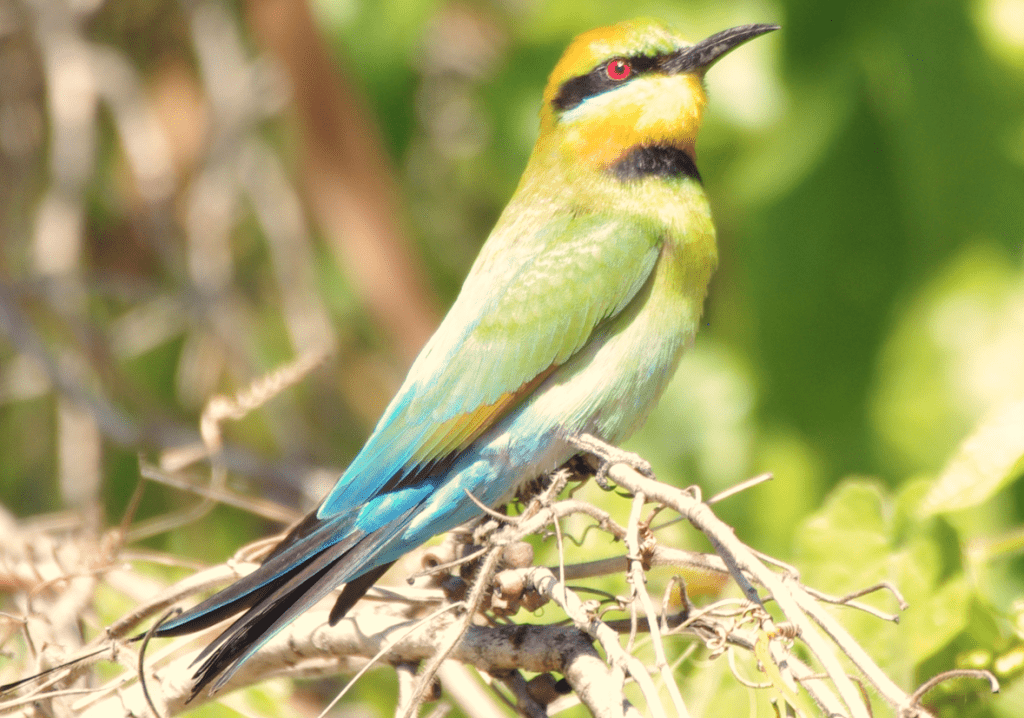
Or taking in the dazzling display of colours as exhibited by the bee eater Merops ornatus.
Flower Pollination: Honeyeaters and lorikeets are efficient pollinators and Australian native flowers have adapted to their feeding habits. Birds with the native bees and insects were a welcome sight when the Pipa or loquats burst into bloom, which in turn attracted even more small birds. The birds were not welcomed when the trees fruits were ripening but then they were strategically planted as decoys. That’s right the loquats were more attractive to the birds and kept them away from the Mandarins and oranges. We still managed to get a few fruits for ourselves every day and a few cartons for the market.

Of the 165 specie of Honey Eaters that occur worldwide 67 are to be found in Australia.
Honeyeaters range in size from tiny to fairly large. They vary in colour from plain olive-browns, olive-greys, reds, blues, yellows, purples, oranges, black and white. They are typically vocal, active docile to very aggressive birds. The bill is usually long, slender and curved downwards, notched and often with fine teeth, but never bristled. The tongues of honeyeaters have adapted specifically to feed on nectar from long slender tube flowers or those with long stamens. The tongues protrude; have longitudinal grooves, 4 apical lobes each with a brush for collecting the nectar. The legs of honeyeaters are long with strong clasping feet so they can securely holding onto small branches and twigs to reach the flowers or alternatively they are short and strong with short sharp claws for holding on upside down.
Nectar is mostly water and simple sugars, with only minute amounts of other food substances. Sugar provides honeyeaters with the energy they need for their daily activity, but does not supply the proteins, vitamins, fats and oils essential for growth, repair and functioning of their tissues. Eating insects and small quantities of pollen provides these nutrients. Some honeyeaters eat a lot of fruit while others are insectivorous.
Flowers also attract hundreds of specie of insects that seek out nectar and pollen. These include butterflies, moths, bees, wasps, ants, beetles and pollen flies to mention a few which in return attract the insectivorous animals to the plants like birds and bats. This makes our native flora crucial in the start of a long chain in the web of life.
Planting a variety of native plants and retaining large areas of bushland is imperative to ensure biodiversity, even in suburbia. The unnecessary and deliberate removal of native plants and their replacement with foreign plants for gardens, streets, roads and parkland accentuates the dire situation many small birds and mammals already find themselves in. Poor environmental decisions from the past still leave their legacy today. Often decisions made today are made with political expediency and have no bearing or feeling for those that are impacted the most. Our native wildlife is for the most part having their futures determined now for generations to come and for some permanently. It is extremely important to eliminate cats, feral dogs, foxes pigs and rats. If this is achieved you may attract the exquisite beauty and rarity of Quails or other birds, which nest on the ground like Tyto longimembris.
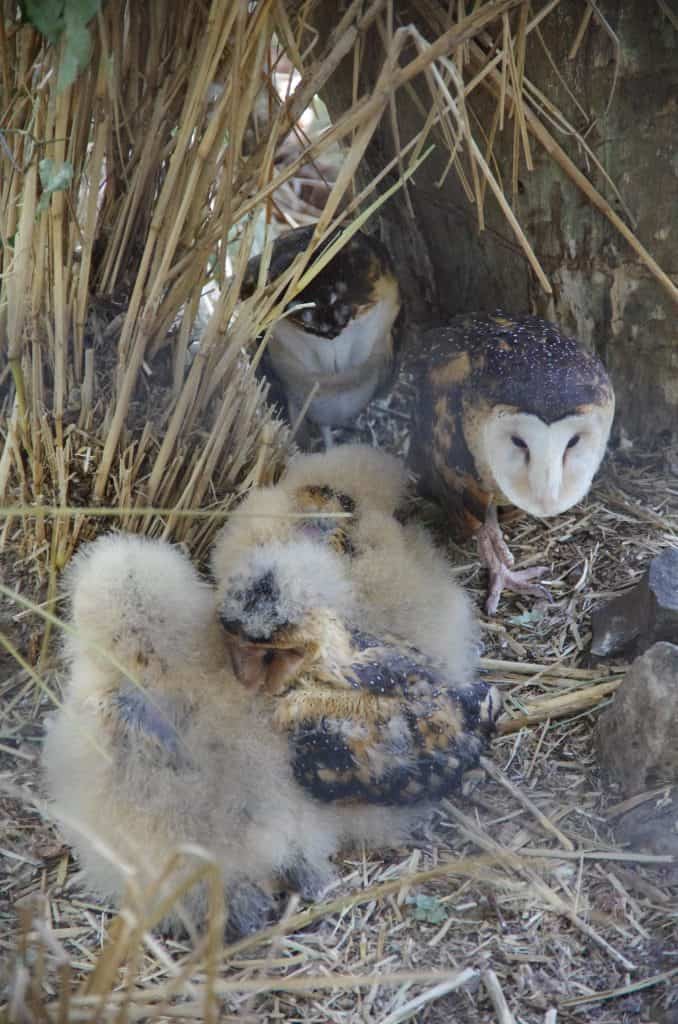
Further Comments from Readers:
All information is included in good faith and has been thoroughly researched prior to printing. The website or the author does not warrant or guarantee the accuracy of any information on these pages, nor does the website or the author accept any responsibility for any loss arising from the use of the information found within. The views and opinions are strictly those of the author or those members who chose to actively participate in the contents herein.
“Hi reader, it seems you use The Bible of Botany a lot. That’s great as we have great pleasure in bringing it to you! It’s a little awkward for us to ask, but our first aim is to purchase land approximately 1,600 hectares to link several parcels of N.P. into one at The Pinnacles NSW Australia, but we need your help. We’re not salespeople. We’re amateur botanists who have dedicated over 30 years to saving the environment in a practical way. We depend on donations to reach our goal. If you donate just $5, the price of your coffee this Sunday, We can help to keep the planet alive in a real way and continue to bring you regular updates and features on Australian plants all in one Botanical Bible. Any support is greatly appreciated. Thank you.”
In the spirit of reconciliation we acknowledge the Bundjalung, Gumbaynggirr and Yaegl and all aboriginal nations throughout Australia and their connections to land, sea and community. We pay our respect to their Elders past, present and future for the pleasures we have gained.